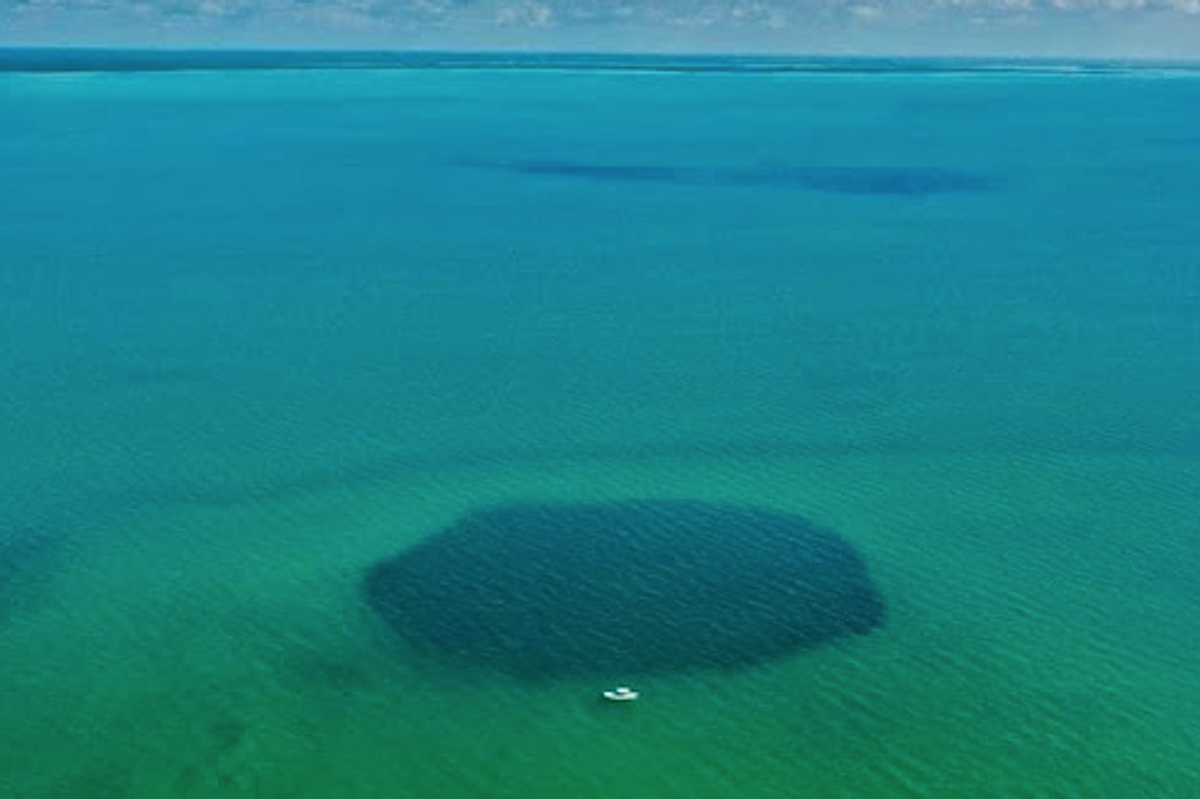Science & Tech
Harriet Brewis
Apr 30, 2024
What Exactly Is at the Bottom of This Mysterious 'Blue Hole?'
ZMG - Amaze Lab / VideoElephant
Researchers have discovered an underwater sinkhole so deep, they haven’t even reached the bottom yet.
Taam Ja' Blue Hole (TJBH), which lies off the southeastern coast of Mexico’s Yucatan Peninsula, is the deepest in the world, stretching at least 420 metres (1,380 feet) below sea level.
This is 146 metres (480 feet) deeper than experts first documented when they discovered the blue hole in 2021, Live Sciencereports.
It is also 118 metres (390 feet) deeper than the previous record holder: the Sansha Yongle Blue Hole (also known as the Dragon Hole) in the South China Sea.
"On December 6, 2023, a scuba diving expedition was conducted to identify the environmental conditions prevailing at the TJBH," researchers wrote in a study published in the journal Frontiers in Marine Science on Monday (29 April).
During the mission, the team took depth, temperature and conductivity measurements of the hole using a special probe that can read water properties and transmit them to the surface in real-time.
The data revealed that the Taam Ja' Blue Hole is "the world's deepest known blue hole, with its bottom still not reached," the researchers confirmed in their study.

The analysis also revealed different layers of water within the blue hole, including a layer below 400 metres (1,312 feet) where the temperature and salinity conditions were strikingly similar to those of the Caribbean Sea and nearby coastal reef lagoons.
This suggests the blue hole may be connected to the ocean via a hidden network of tunnels and caves, the study noted.
Blue holes are underwater sinkholes, much like sinkholes on land. Their name apparently derives from the contrast between the dark blue, deep waters of their depths and the lighter blue of the shallows around them.
They vary in size, shape and depth, but most are home to an abundance of plants and animals, according to NOAA Ocean Exploration.
Still, little is known about these ecological hotspots because of their lack of accessibility and unknown distribution.
The opening of a blue hole can be several hundred feet underwater and, in the case of many holes, the opening is too small for even an automated submersible to enter.
This all goes to prove that we have much to learn about these elusive underwater worlds, and the discovery of the Taam Ja' Blue Hole is just the beginning of the story.
Sign up for our free Indy100 weekly newsletter
Have your say in our news democracy. Click the upvote icon at the top of the page to help raise this article through the indy100 rankings
Top 100
The Conversation (0)














